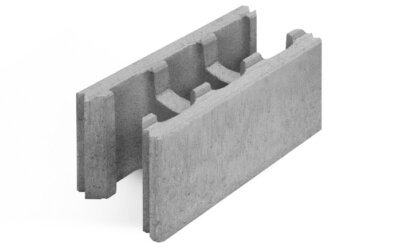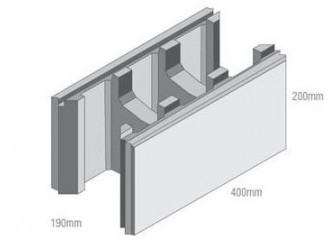Versaloc Interlocking Blocks
As an innovation from Versaloc Walling System, the Versaloc Interlocking Blocks offers a simplistic dry stacking walling system for home landscaping purposes. Suitable to build up to 600mm in height without reinforcement, the Versaloc blocks are perfect for garden beds and small residential walls.
No adhesive, including glue or mortar, is required for the Versaloc system. These blocks interlock with each other for a rigid structural structure. In 150mm, 190mm, and 290mm wide variants, the Versaloc Interlocking Blocks suit almost all general wall needs up to 60cm tall.
Versaloc Interlocking Blocks for Retaining Wall
$5.45/unit
Versaloc Interlocking Blocks for Retaining Wall
$5.10/unit
Versaloc Interlocking Blocks for Retaining Wall
$9.25/unit
About Versaloc
The Versaloc® Walling System by Adbri Masonry offers a smart, mortar-free solution that delivers significant time and cost savings on-site. Designed as a true dry stack walling system, Versaloc allows blocks to be quickly and precisely assembled without the need for mortar, boosting efficiency from the ground up. Compared to traditional blockwork, tilt panels, and other walling systems, Versaloc stands out for its speed, simplicity, and reduced need for bracing or formwork. Builders and installers benefit from genuine productivity improvements—cutting construction time and reducing labour costs—resulting in potential savings of up to 45%. Whether you're working on a large-scale commercial build or a residential development that demands flexibility, Versaloc offers a streamlined, high-performance alternative to conventional masonry solutions.Advantages of Versaloc
- Dry stack system
- Rapid construction
- 4 hour fire rating
- No formwork needed on first course
- Construct during inclement conditions
- Unique interlocking design
- Significantly reduces mess on site
- Detailed bevel provides shadow lines
- Ready to build
- Maximum flow for improved core fill
- Increased unit to unit interlock
- No need to hose out cores
- Eliminates the need for termite control products
How to build retaining walls with interlocking blocks?
Building a retaining wall with interlocking blocks is a great DIY project that can be done with some basic tools and a little bit of planning. Here are the steps to follow:- Determine the location and size of the retaining wall: Measure the area where you want to build the retaining wall and mark the location of the wall using stakes and string.
- Prepare the base: Clear the area of any vegetation or debris, and then dig a trench for the base of the wall. The trench should be at least 6 inches deep and as wide as the blocks you are using. Fill the trench with gravel and compact it with a tamper.
- Level the base: Use a level to make sure the base is level from end to end.
- Lay the first course of blocks: Start at one end of the wall and lay the first course of blocks on the gravel base. Make sure the blocks are level and tightly fitted together. Use a rubber mallet to tap the blocks into place.
- Add additional courses: Continue laying additional courses of blocks, making sure each course is level and tightly fitted together. Stagger the joints of each course to add strength to the wall.
- Cut blocks as needed: Use a saw or chisel to cut blocks as needed to fit around corners or to create a stair-step pattern.
- Backfill behind the wall: As you add each course of blocks, backfill behind the wall with soil, tamping it down to create a solid base for the wall.
- Install drainage: If your retaining wall is more than 3 feet high, you should install drainage behind the wall to prevent water from building up behind the wall and causing damage. This can be done by adding a perforated pipe at the base of the wall and covering it with gravel.
- Finish the top of the wall: Once the wall is complete, you can finish the top with capstones, which are specifically designed to fit over the top of the blocks and provide a finished look.



